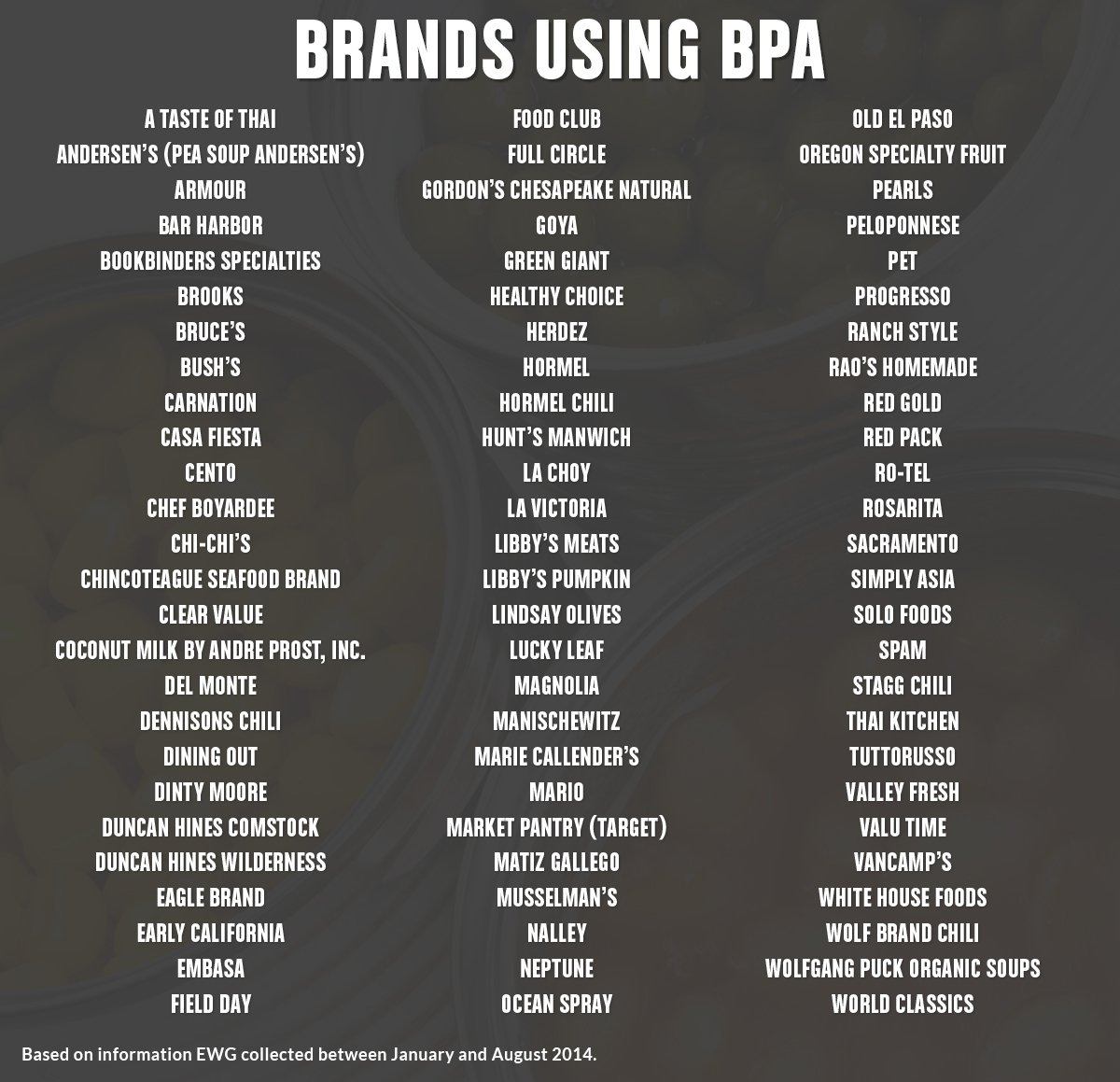
Coca-Cola Del Monte Kraft Unilever Kroger Safeway Supervalu and Wal-Mart all failed. Using BPA-free plastic products could be as harmful to.
This assessment is based on the review of hundreds of studies.
Is non intent bpa safe. BPA is in more products than you think such as canned food Based on FDAs ongoing safety review of scientific evidence New Study Finds asthma BPA-related chemicals Theres plenty of evidence showing that BPA is harmful by mimicking a variety of natural human hormonesBPA-Free Chemicals May Be More Harmful to Brain Development than BPA and very small amounts may be detected in non. People became worried about BPA safety because of animal studies that showed a link between high levels of the chemical and infertility diabetes obesity heart disease and high blood pressure. However the US.
Food and Drug Administration FDA has said that BPA is safe at the very low levels that occur in some foods. This assessment is based on the review of hundreds of studies. The FDA continues to monitor the research.
If youre concerned about BPA you can take steps to reduce your exposure. In an article published on August 15 2016 by news provider FoodManufacturecouk journalist Paul Gander reports on the progress made in the development of can coatings free of bisphenol A BPA CAS 80-05-7. The first wave of BPA non-intent BPA-NI alternatives meaning BPA is not an intentionally added substance in the coating is posing several challenges to coating suppliers and the food industry.
BPA-NI which means that they are not intentionally made with BPA or other bisphenol compounds eg BPS BPF or BADGE. BPA-free may contain traces of bisphenol compounds. Packaging may intentionally or unintentionally contain bisphenol compounds other than BPA.
Though the US. Food and Drug Administration FDA claims that the levels of BPA found in our food are safe others have sounded the alarm about the potential risks of BPA. Even in small doses this disruptive chemical can cause dramatic changes in metabolism and.
One is that plastics labeled as BPA free have been found to still leach low levels of BPA into the contents of the containers even in cases of non-polycarbonate plastics. The other is that the chemicals typically used to replace BPA may be just as harmful as BPA. As BPA was phased out bisphenol-S BPS was favored as its replacement.
As a result the FDA concluded that currently authorized uses of BPA continue to be safe for consumers source. There are BPA-free cans in the market. According to the Can Manufacturers Institute BPA in cans is a matter of the past.
Allegedly about 95 percent of modern food cans. Polypropylene a complex plastic is generally considered safe for humans. Its FDA-approved for food contact and is often used for containers like those that hold yogurt and butter products.
Other BPA-plastic alternatives include aluminum bottles with non-BPA plastic liners such as Siggs Lifestyle water bottles. Reduce WaterWeek a popular beverage container features ABS plastic with a polypropylene cap and is a recommended choice for BPA-free users. Over a year ago France unilaterally banned the use of direct food-contact BPA.
No safe threshold or specific migration limit SML was given. BPA exposure possibly can affect the brain the prostate gland of fetuses infants and children and it might increase blood pressure according to the Mayo Clinic. The same article does state however that US.
Food and Drug Administration FDA testing shows BPA to be safe. Green Century released a report earlier this year Seeking Safer Packaging on the issue and condensed the results into a handy scorecard that gives 26 major brands a grade for their BPA policies. Coca-Cola Del Monte Kraft Unilever Kroger Safeway Supervalu and Wal-Mart all failed.
The FDA has declared that bisphenol A BPA is safe at the current levels occurring in foods but a number of myths about BPA continue to cause concern and confusion in the public. Click to read some of the common myths about BPA and the realities we know from extensive scientific study. The safety of our consumers is very important to us.
So when BPA-lined cans raised health concerns Amys quickly transitioned to tin-plated non-BPA-lined cans. Our tin-plated can has an approved non-BPA interior lining The can end is made of tin-free steel and has an approved non-BPA lining as well as a. As reported on the Californias Office for Environmental Health Hazard Assessment Effective May 11 2015 the Office of Environmental Health Hazard Assessment OEHHA added Bisphenol A BPA CAS No.
80-05-7 to the list of chemicals known to the state to cause reproductive toxicity for purposes of the Safe Drinking Water and Toxic Enforcement Act of 1986 Proposition 65. Think all BPA-free products are safe. Not so fast scientists warn Date.
February 18 2020 Source. University of Missouri-Columbia Summary. Using BPA-free plastic products could be as harmful to.
Based on FDAs ongoing safety review of scientific evidence the available information continues to support the safety of BPA for the currently approved uses in food containers. We refer to BPA non- intent rather than BPA-free as a more accurate term for these circumstances. Moreover current food contact materials have been in use for over 40 years and are considered safe by the US.
Food and Drug Administration FDA and other regulatory authorities. Our industry -leading conversion to BPA non-intent. Safe Alternatives to BPA-Free Plastic.
So far one thing is clear. BPA is bad news and its alternatives are not that much better. But what should you use instead.
There are two alternatives to plastic that you can never go wrong with glass and stainless steel.